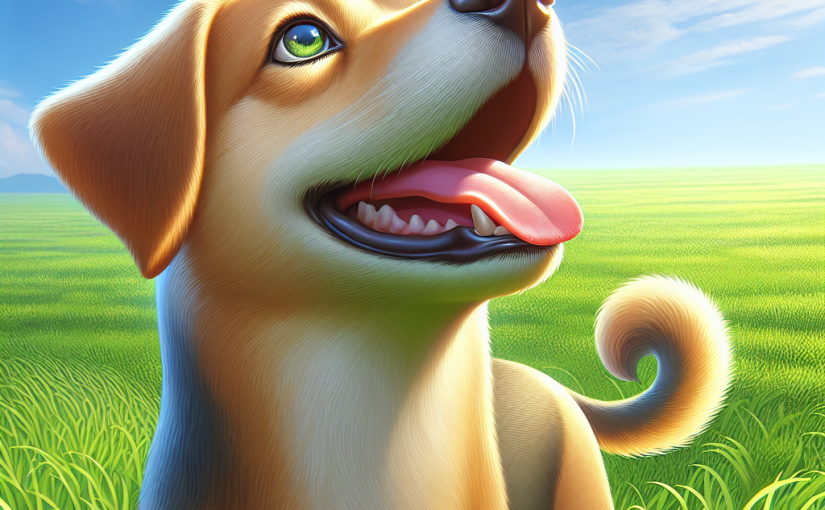The Mysterious World of Fleas

Let’s talk about fleas. These tiny buggers have a life cycle that feels like something out of a sci-fi movie. They’re not just about hopping around and making your pets scratch like they’ve got a bad case of jazz hands. No, there’s a whole secret world behind those little jumps. You see, understanding the flea life cycle is like finding out how the magic trick works. Once you do, you’re halfway to tackling them for good.
Fleas are tough. They’ve been around since dinosaurs roamed the earth—no kidding. They’ve survived ice ages, plagues, and all sorts of human attempts to wipe them out. And they’ve got this cycle, this sneaky little life cycle, that makes them so hard to beat. It’s all about timing, and boy, do they know how to time things right. Ask any pet owner who’s battled them during a hot summer.
The flea life cycle stages are all about survival. They’ve got this routine down pat, and it’s like they’ve got an internal clock set to “annoy the humans.” They don’t need much—just a warm body and a cozy environment. And don’t get me started on how long do fleas live. If you’ve ever dealt with an infestation, you know it feels like they live forever.
Flea Life Cycle Basics
Alright, let’s break this down. The flea life cycle has four stages: egg, larva, pupa, and adult. It’s like they’re putting on a play with four acts, and each one has its role in making your life a bit more interesting—if by interesting, you mean itchy and frustrating.
Flea eggs are tiny. You could have a hundred of them in your carpet right now, and you wouldn’t even know it. They’re like the ninjas of the insect world. They fall off your pet, roll into the fibers of your carpet, and just hang out until it’s time to hatch. Flea eggs development doesn’t take long—just a few days in the right conditions. And then, bam, you’ve got larvae.
The flea lifespan conditions are pretty cozy if you think about it. Warm, humid environments are their jam. It’s like they’re on a forever vacation in the tropics, while you’re stuck trying to figure out why your dog keeps scratching its ear off. No wonder they thrive.
Eggs: The Beginning of the Journey
Oh, flea eggs. These tiny specks are where it all begins. They’re laid by the adult female flea, who can lay up to 50 eggs a day. Can you imagine? That’s like a flea baby boom happening right under your nose. And since they’re not sticky, these eggs just fall right off your pet. It’s like a little egg rain, only you can’t see it, and it’s happening in your living room.
Understanding flea growth starts here. The eggs hatch into larvae in about two days to two weeks, depending on the temperature and humidity. It’s like they’ve got their own little weather app, and when conditions are just right, out they pop. This is why flea eggs development is crucial to get a handle on. Because once they hatch, you’re in for a whole new level of fun.
Larvae: The Hungry Phase
Welcome to the larvae stage, where things get a bit more… squirmy. These little guys look like tiny worms, and they’re hungry. Flea larvae behavior is all about eating. They munch on organic matter—like adult flea poop, which is basically dried blood. Gross, right? But hey, they’ve got to eat too.
They hang out in the dark, moist areas of your home. Under the couch, in the carpet, maybe in that pile of laundry you’ve been meaning to do. This is the hungry phase—where understanding flea growth is key because soon, they’re going to turn into pupae.
This stage lasts about a week or so, but it can go longer if the conditions aren’t perfect. They’re like those kids who don’t want to come out and play until everything’s juuust right.
Pupae: The Waiting Game
Now we’re at the pupae stage. This is where the flea life cycle time really plays its trump card. Pupae are like little time capsules. They’re wrapped in a cocoon, and they’re just hanging out, waiting. Flea pupae stage can last a few days or several months. Yeah, months. It’s like they’re in a holding pattern, waiting for the right moment to emerge.
This stage is hard to deal with because pupae are tough. They’re like the armored tanks of the flea world. They can hang out in your carpet for ages, just biding their time. And when they do come out, they’re ready to jump onto the nearest warm body and start the cycle all over again.
It’s all about the timing. Understanding flea growth means knowing this stage is the hardest to kill. But once you’ve got a handle on it, you’re on your way to breaking the cycle.
So there you have it—the mysterious, infuriating world of fleas and their life cycle. It’s a complex dance of survival, and now you’re in on the secret. Good luck out there, and may your pets stay itch-free. Thanks for sticking around and taking this little journey with me. Here’s to fewer fleas and more peace in your home.
The Egg Stage: Where it All Begins
Alright folks, let’s dive into the world of fleas. Picture this—tiny, almost invisible eggs scattered around, playing hide and seek right under your nose. That’s where the flea life cycle time kicks off. These sneaky flea egg development stages are the stuff of nightmares for any pet owner. Eggs don’t hang around long, though. They drop off your furry friends like unwanted guests at a party. Within a few days, these eggs hatch into larvae, wriggling around, avoiding light like late-night snackers trying not to wake the household.
Here’s the kicker: these eggs are laid on your pets but end up almost anywhere. Your carpet, your couch, even between the floorboards. Fleas on pets behavior, well, it starts here. It’s like a covert operation—laid in secret, quietly waiting for the right moment to hatch. And just like that, the cycle begins anew. You might be sipping your morning coffee, completely unaware that the next generation of fleas is already plotting its takeover.
From Larva to Pupa: The Hidden Transformation
Now, if you thought the egg stage was sneaky, wait till you hear about this next bit. The larvae, they don’t just hang around. They’re on a mission—a mission to transform. We’re talking about the flea larva pupa transformation here. It’s like they’re playing the ultimate game of hide and seek. They munch on organic matter. Flea dirt, skin flakes—yep, that’s their buffet. Not the most glamorous lifestyle, but these critters aren’t in it for the luxury.
And then, just when you think you’ve got a handle on them, they cocoon themselves. Pupae, wrapped up tight, waiting for the perfect moment to emerge. It’s like they’re plotting their grand entrance, waiting for vibrations or carbon dioxide to tell them the coast is clear. You might think they’re gone, but surprise—they’re just biding their time. Flea life cycle time, folks, it’s relentless, and this stage is all about patience.
Adult Fleas: The Ultimate Survivors
Now, onto the main event—the adults. These little jumpers are the ultimate survivors, hopping around like they own the place. And you know what? They kind of do. The adult flea lifespan isn’t long in the grand scheme of things, but boy do they make it count. Once they find a host, they’re all in. Fleas on pets behavior takes center stage here. They settle in, feeding and breeding like there’s no tomorrow.
Here’s where it gets interesting. Once they’re adults, they’re all about the host. Your dog, your cat—these are their new homes. The flea life cycle on dogs becomes a never-ending cycle of feeding and laying eggs. It’s a relentless pursuit, a survival game where the stakes are high. And those eggs, well, they start the whole process over again. It’s like a never-ending horror movie, only without the popcorn.
Fleas and Their Hosts: A Symbiotic Dance
Let’s talk about this dance—the one between fleas and their hosts. It’s a symbiotic relationship, but not in the way you might think. Fleas need a host to survive, and your pets, well, they become unwilling participants in this flea life cycle time dance. The fleas latch on, feeding off the blood like tiny vampires. It’s a wild ride, one your pets would rather skip.
Here’s the thing—fleas don’t just show up. They’re brought in, usually by your pets. Dogs, especially, are the main culprits. The flea life cycle on dogs is a never-ending cycle of feeding and breeding. And it’s not just dogs. Cats, rabbits, even humans can get caught in the crossfire. It’s a dance, alright, but not one you’d want to join in. It’s like a never-ending waltz, only without the music.
Breaking the Cycle: Strategies to Prevent Infestations
Now, let’s get to the nitty-gritty—how to prevent flea infestations. It’s all about breaking the cycle, stopping these little jumpers in their tracks. First things first—flea control methods. We’re talking regular checks, frequent cleaning, and treating your pets with the right stuff. It’s a battle, but one you can win with a bit of effort and a keen eye.
Next up, make your home less appealing. Vacuum like it’s going out of style. Wash pet bedding—heck, wash everything. And don’t forget the yard. Fleas love a good outdoor hangout, so keep the grass short and tidy. And those flea control products? They’re not just for show. They work, but only if you use them right.
So, there you have it. The flea life cycle time isn’t just a one-off event. It’s a relentless cycle, but one you can break. Thanks for hanging out with me on this wild ride through flea-ville. Remember, you’re not alone in this fight. With the right strategies, you can keep those pesky fleas at bay. Take care, and may your days be flea-free!
The Flea’s Midlife Crisis: Adult Fleas and Their Antics
Ah, fleas—those tiny jumpers that turn your life upside down. You’ve heard of a midlife crisis, right? Well, adult fleas are the kings of it. No Ferraris or skydiving here, just relentless feeding and breeding. They hit their prime in the flea life cycle and, boy, do they make it count. Ever notice how they’re always around? That’s because these little guys are the masters of survival. Adult flea behavior is all about two things: eating and multiplying.
It’s like a never-ending buffet at your expense. They don’t ask permission; they just move in. You’re left scratching your head—and yourself—wondering how something so small can cause so much trouble. When these adult fleas come alive, it’s like a tiny party you never wanted to host. They feed, they breed, and before you know it, your pet is a walking flea hotel.
Unwanted Guests: Fleas in Your Home
So, your house is now a hotbed for fleas. They’re not paying rent, mind you, but they’re sure making themselves comfortable. Fleas in the home are like those relatives who show up unannounced and overstay their welcome. You try to keep a clean house, but fleas have other plans. They lay eggs in carpets, furniture, and anywhere they can find a cozy spot.
Picture this: you’re sipping your morning coffee, and there goes a flea—right across your newspaper. It’s the stuff of nightmares, isn’t it? But it’s real life. Fleas in the home can make you feel like you’re losing your mind. You might start to think your house is a flea motel, complete with all the amenities for these uninvited guests.
Flea Control: Battle Tactics and Home Remedies
Now, here’s where it gets interesting. You need to become a general in the war against fleas. Flea control is about strategy—plain and simple. You might think, “Hey, I’ll just call in the pros.” But wait, Grandma’s got some wisdom too. Those flea infestation home remedies? They might surprise you.
You’ve got natural options like baking soda, salt, and even lemon spray. Roll up your sleeves, sprinkle, spray, and vacuum like your life depends on it. Getting rid of fleas naturally can be a slow grind, but it’s satisfying when you see results. And when you need the big guns, don’t hesitate to bring in the pros. Just make sure they know you’re the boss in this operation.
The Cost of Infestation: Time and Money
Ah, the cost of flea treatment. It’s not just about the dollars, though that’s a big part of it. It’s about the time, the energy, and the emotional toll these pests take on you. Flea lifecycle management isn’t a one-and-done situation. It’s a marathon, not a sprint.
You might shell out for treatments, sprays, and maybe even a cleaning service. It adds up, doesn’t it? But consider this—each dollar spent is a step closer to reclaiming your home. The time invested now saves you headaches later. Fleas don’t just siphon off your pet’s blood; they drain your resources in every way imaginable.
Moving Forward: Keeping Fleas at Bay
So, what’s the plan moving forward? You’ve battled, you’ve spent, and now it’s time to keep those critters at bay. Flea prevention tips are your new best friend. Regular vacuuming, washing pet bedding, and using preventative treatments can keep your home flea-free.
It’s not about living in fear of the next infestation. It’s about being prepared. You’ve got this. You’re wiser and ready to handle whatever those fleas throw your way next. Embrace the challenge with a grin—you’re not just fighting fleas; you’re winning back your peace of mind. Thanks for sticking it out and good luck in this wild, itchy ride.
Quick Takeaways:
Alright folks, let’s lay it out straight. The flea life cycle time is a sneaky little process that can turn your peaceful home into a battleground. It all kicks off with flea eggs—so tiny, you might overlook them like a crumb on your kitchen floor. But don’t be fooled. These eggs hatch into larvae, squirming around like they own the place. Then, they hit the flea pupae stage—it’s like a stealth mode where they bide their time, waiting for the perfect moment to spring into action.
And when they do, boy, do they make an entrance as adult fleas. These guys are the real deal, jumping and biting like there’s no tomorrow. They latch onto your pets, turning them into unwilling hosts. The flea life cycle on dogs is a relentless merry-go-round unless you step in.
Don’t despair, though. There are tricks to break this cycle. From flea control methods to natural remedies, you’ve got options. Just remember, you’re not alone in this fight. So, let’s roll up those sleeves and get to work. Thanks for sticking with me through this flea fiasco. May your days be flea-free!
FAQs:
1. How long do fleas live under different conditions?
Fleas are like those house guests that just won’t leave. In the right conditions—warm and humid—these pesky little critters can live for about two to three months. Adult fleas can hang around for a good few weeks, but a flea’s lifespan conditions can shorten drastically if it’s cold or dry. So, keeping your home less hospitable for them is key.
2. What are the stages in the flea life cycle?
The flea life cycle stages are a whirlwind tour through the underbelly of flea-ville. It starts with flea eggs, which hatch into larvae. These wrigglers then cocoon themselves as flea pupae, awaiting the perfect moment to emerge as adult fleas. The whole cycle can take anywhere from a couple of weeks to several months, depending on the environment.
3. What’s the deal with flea pupae stage?
Ah, the flea pupae stage—it’s like the flea’s secret weapon. In this stage, they wrap themselves in a protective cocoon, making them tough to spot and even tougher to kill. They can hang out in this stage for weeks or even months until they sense a potential host nearby. It’s like they’re waiting for the VIP entrance to open.
4. How can I prevent flea infestations in my home?
Preventing flea infestations is all about being proactive. Vacuum like you mean it, wash your pet’s bedding regularly, and consider using flea prevention tips like treatments recommended by your vet. Keeping your yard tidy and your home clean can also make a big difference. It’s a team effort, so get everyone on board.
5. How do fleas behave on pets?
Fleas on pets are all about survival. They latch onto your furry friend, feeding on their blood and causing them discomfort. Your pet might scratch or bite themselves more than usual—it’s their way of saying, “Hey, something’s not right here!” Keeping a close eye on your pet’s behavior and grooming them regularly can help spot fleas early.
Conclusion:
So there you have it. Fleas are the uninvited guests nobody wants, yet they persist. Understanding the flea life cycle time is your first defense. From those sneaky flea eggs to the relentless adult fleas, each stage is a challenge—but not an insurmountable one. With a bit of vigilance and a few tricks up your sleeve, you can turn the tide in your favor.
Remember, persistence is key. Don’t give those fleas any chance to settle in. Stay ahead of the game with regular cleaning, grooming, and targeted flea control methods. You’ve got this, and we’re all rooting for you. Thanks for hanging in there with me on this wild ride through flea-ville. Here’s to a future filled with happier, flea-free days!
References:
1. [Centers for Disease Control and Prevention (CDC) – Flea Lifecycles](https://www.cdc.gov/fleas/about/flea-lifecycles.html)
2. [Orkin – Flea Life Cycle](https://www.orkin.com/pests/fleas/flea-life-cycle)
3. [TheVets – Flea Life Cycle](https://thevets.com/blog/flea-life-cycle/)
4. [Terminix – Flea Life Cycle](https://www.terminix.com/other/fleas/life-cycle/)
Our solution eradicates fleas on contact without harmful chemicals, ensuring a safe environment for your pets and family. Easy to use and highly effective, SayByeBugs helps you maintain a flea-free home. Learn more and order today at SayByeBugs.com
Our solution eradicates fleas on contact without harmful chemicals, ensuring a safe environment for your pets and family. Easy to use and highly effective, SayByeBugs helps you maintain a flea-free home. Learn more and order today at SayByeBugs.com


